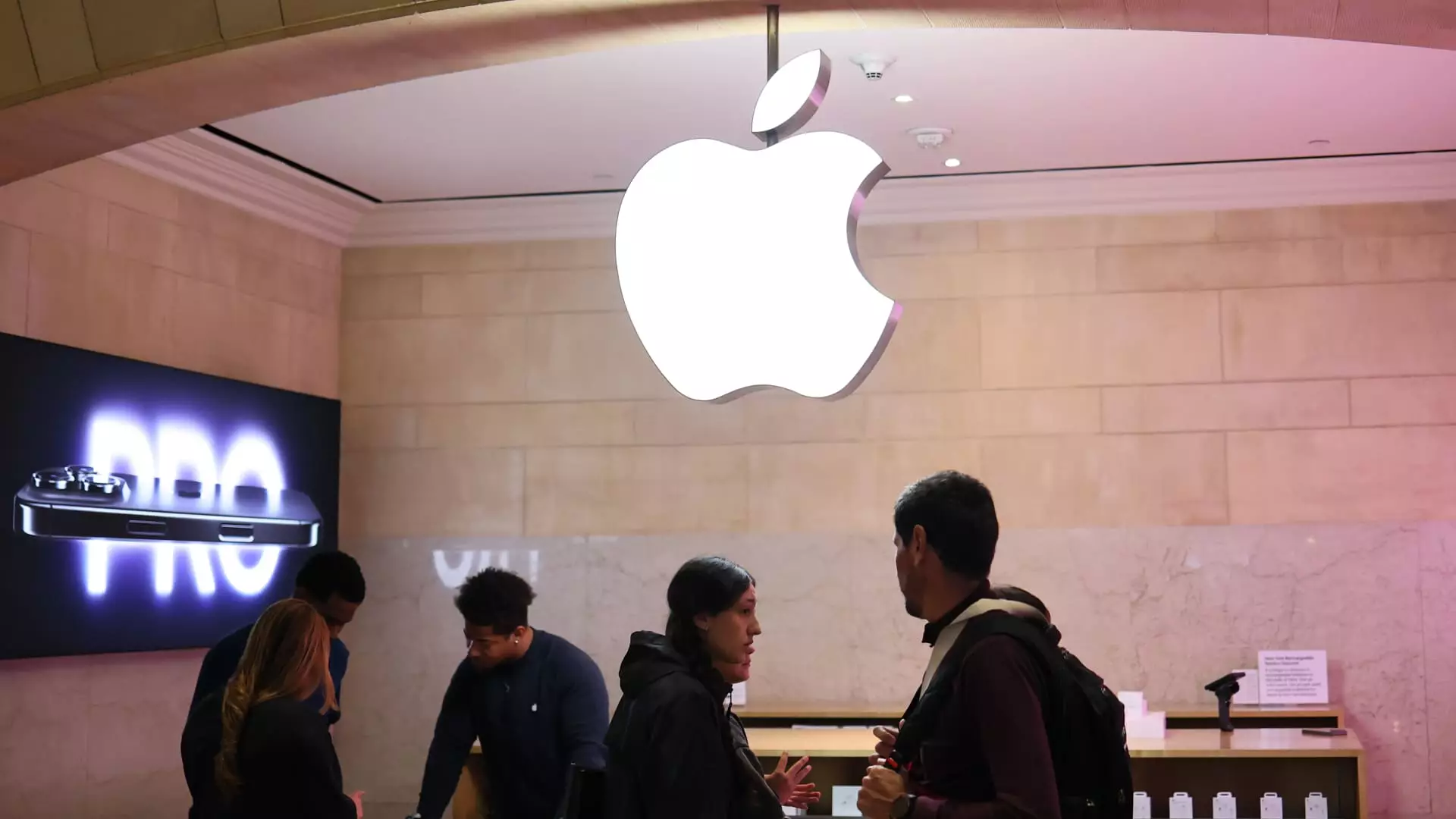In the current landscape of global trade, few narratives have emerged as enthralling—and deeply concerning—as the plight of Apple Inc., now ensnared in the consequences of U.S. tariffs on Chinese goods. Despite a 90-day reprieve on “reciprocal tariffs” announced by former President Trump, Apple’s dependence on Chinese supply chains stands out starkly. As the largest company in the world, Apple expectedly occupies a pivotal position in the discourse surrounding tariffs. Yet, while many American firms might have found temporary relief in the negotiations, Apple’s reality is a nightmare scenario unfolding before our eyes.
The cumulative tariff rate on Chinese imports now hovers at a staggering 145%. This is not just a statistic—it’s a ticking time bomb for a company that shipped 77 million iPhones to the U.S. in the last year, with about 80% of those devices originating from China. Analysts like Dan Ives from Wedbush Securities have painted a vivid picture, likening Apple’s situation to “having their boat flipped over in the ocean with no life rafts.” This powerful analogy highlights an absence of viable alternatives for a company so deeply integrated into a complex global supply chain.
Tariffs: The Price Surge Predicament
Now, the figures are alarming. Under the current tariffs, Apple could be forced to jack up iPhone prices by an eye-watering 85% in order to safeguard its profit margins. Comparatively, the previous tariff rates at 54% created significant impacts but remained somewhat palatable. What can Apple do at this point? The idea of hiking prices to maintain margins not only affects Apple’s bottom line but risks alienating a consumer base already on the digital edge.
Economic theories suggest that price elasticity could work in Apple’s favor, but the company’s luxury positioning might not save it from public relations fallout. In a market punctuated by competitive smartphones, consumers may explore alternatives if Apple’s premium devices become cost-prohibitive. The repercussions of this could extend far beyond immediate sales, potentially jeopardizing Apple’s brand loyalty.
Strategic Retreat or Forward-Thinking Maneuver?
Undeniably, Apple has been making moves to diversify its manufacturing footprint away from China. Recently, reports indicated that the company shipped 600 tons of iPhones or approximately 1.5 million units from India before tariffs went into effect. Experts suggest this diversifying strategy provides a glimmer of hope, yet questions linger over the ability to ramp up production to meet existing demand. Indian manufacturing capabilities are still in their infancy for high-end models, which raises significant time and logistical challenges.
While Trump’s temporary halt on tariffs may grant a short-term reprieve, it also sets a baseline of 10% on goods coming from India. Whether this will streamline Apple’s transition is debatable, as increased production in a foreign market is seldom straightforward. The reputation Apple has built in terms of reliability and quality is intrinsically tied to its existing supply chains. The slow bureaucratic gears of Indian manufacturing are far from ideal for the urgency Apple now faces.
Navigating the Policy Labyrinth
In light of these challenges, many market analysts speculate that Apple’s best escape may lie in a direct appeal to the administration for tariff exemptions. After all, in a political climate fueled by negotiation and concession, a plea grounded in its $500 billion U.S. investment commitment could bear fruit. Some analysts predict that Apple may find some leeway, echoing sentiments from its previous engagements during Trump’s first term.
Yet this notion comes with a twist of skepticism. The optimism expressed by leadership, such as Daniel Newman of The Futurum Group, revolves around whether such negotiations will translate into meaningful relief. The stark reality reflects a mistrust of whether policy shifts will significantly alter Apple’s trajectory—especially given the clear indications that U.S.-China trade relations haven’t drastically thawed.
The Dark Cloud of Domestic Production
Interestingly, discussions of domestic manufacturing have also ignited fresh debates within the industry. Trump’s insistence that Apple manufacture iPhones in the U.S. strikes a discordant note when juxtaposed against the capitalist ethos of efficiency and cost-effectiveness. Estimates suggest that producing an iPhone domestically could inflate its price to an astronomical $3,500 versus the typical existing rate of around $1,000. For a brand so deeply ingrained in consumer tech, these numbers debunk the myths surrounding the feasibility of U.S. manufacturing.
Scores of analysts remain unconvinced that any form of trade relief will shield Apple from adverse business effects. The prospect of a simple tariff exemption doesn’t appear to guarantee the rubber meets the road, as trade complexities continue to abound. Indeed, uncertainties linger over how far Trump’s tariff negotiations can actually bring relief or if they merely serve as a temporary balm for a much deeper wound.
In summation, Apple stands in a perilous position, balancing on the knife-edge of political discourse and economic viability, attempting to both appease shareholders and retain its luxury brand image amidst a cacophony of tariffs and supply chain woes. The journey forward is fraught with challenges, marking a defining moment for a tech titan whose influence extends far beyond the devices it produces.

